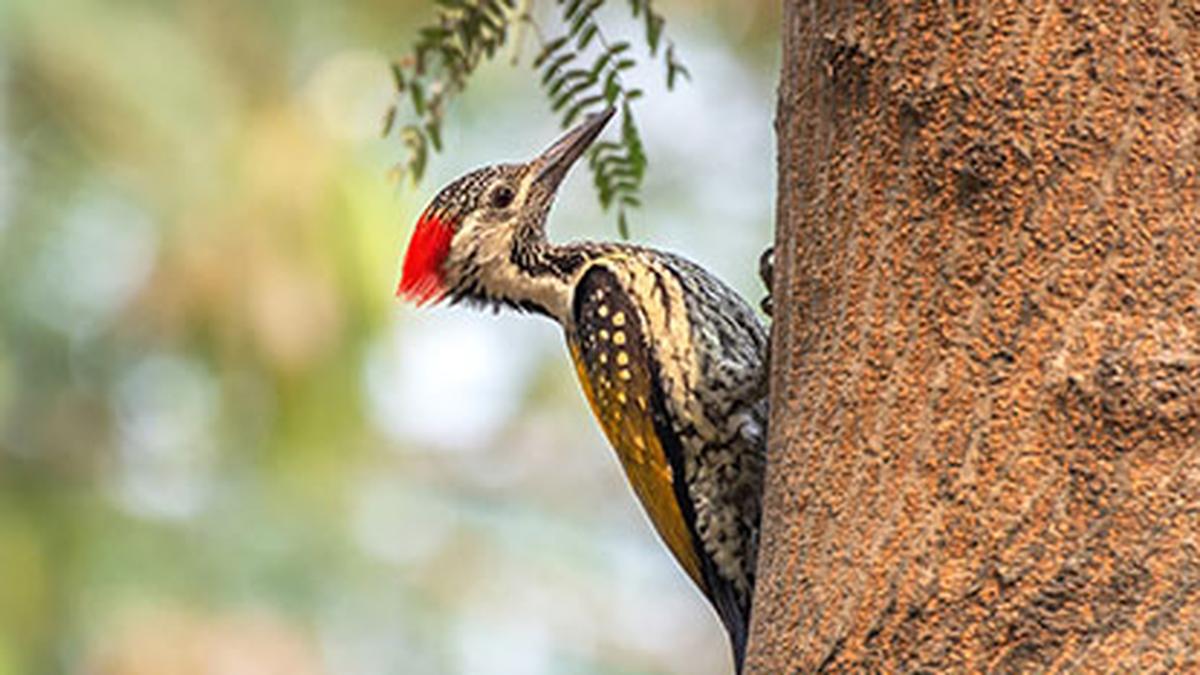PHOTO: Getty Images/iStockphoto
Why do they peck?
First things first, why do they constantly knock their heads against wood? Knocking one’s knuckles against wood is understandable, since it’s considered a source of good luck. But woodpeckers don’t have knuckles, so do they use their bills as a substitute? Not really. The birds hold the ability to peck wood 20 times per second. Through this, they dig for food and create shelters. However, while these are considered to be the reasons, there is one that holds even more depth. Scientists at Brown University, after considerable research, came up with the hypothesis that woodpeckers held a form of ‘gene expression’ within them that was similar to what was found in a songbird’s mind. But while a songbird’s gene expression enables it to attract mates through its tweeting, that of a woodpecker allows it to do the same through pecking and drumming of wood. It’s like a Morse code for birds! With over 200 species of woodpeckers spread across the world, each bird pecks with a different rhythm and altering speeds based on what they are trying to communicate.
A tongue of a tale
They say the tongue is one of the strongest muscles in the human body. But when it comes to the tongue of a woodpecker, well, there lies a whole new realm of fascination. The bird has an extremely long and sticky tongue that it uses for extracting and consuming insects within the holes in the wood drummed by its bill. The surface of their tongues is covered with barbs that help in catching their prey. But hold on! There’s one more incredible usage of this tongue, and that is protecting the skull of the bird. The total length of the tongue is one-third of the woodpecker’s body length. But how does it protect the skull? To understand the importance, we need to take a closer look at the anatomy of the bird’s skull. The tongue is so long that it wraps around the skull, thus protecting it from the impact and cushioning the brain. How? Well, think of the woodpecker’s tongue as an elongated piece of bubble wrap. When the muscles surrounding the bird’s tongue-bone contract, it causes the long tongue to hold the woodpecker’s spine and skull in place as it constantly drums into the tree. And it isn’t just the tongue that provides the bird with protection, but there are also soft bones that lie at the front and back of the skull that spread out the area of the shock generated.
A bike ride of inspiration
What is the main thing that innovators have learned from the anatomy of a woodpecker’s skull? That would be the concept of shock absorption. The woodpecker is nature’s inspirational living creation that showcases the science of cushioning impact. A concept that serves as a major asset for innovation, since it is an ability that can protect objects from breaking and people from sustaining fatal injuries. One prominent invention inspired by the woodpecker would be industrial designer Anirudha Surabhi’s ‘Kranium’. An impact-absorbing bike helmet. Anirudha came up with this idea while on a bike ride. Even though he was wearing a helmet, he still suffered a concussion due to the helmet cracking. A master’s student of design at that time, he had been looking for an idea for his project and decided to use this experience to craft a bike helmet that held similar shock-absorbing properties as that of a woodpeckers skull.
Published – October 07, 2025 07:07 pm IST
